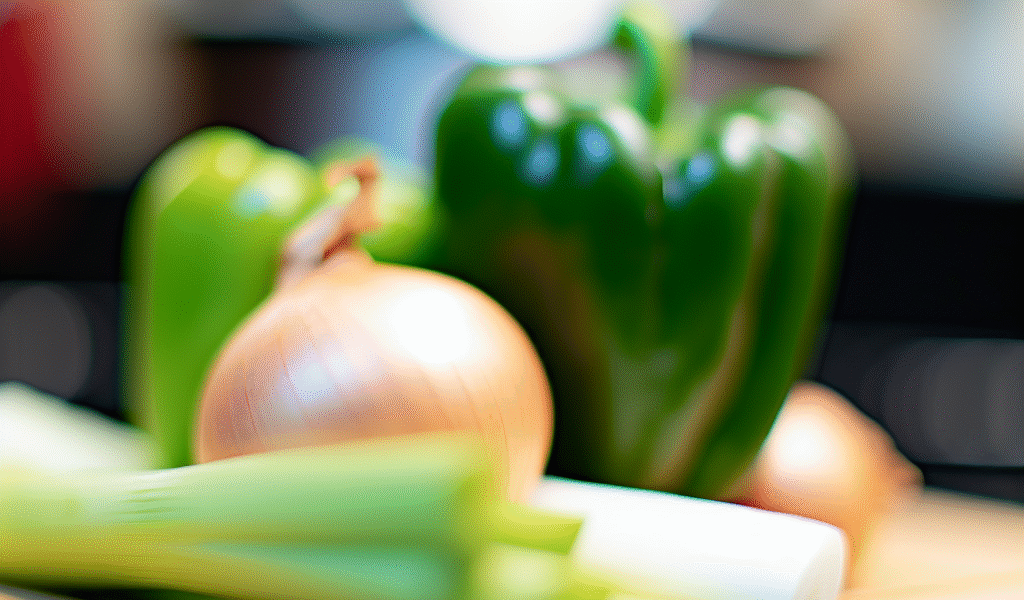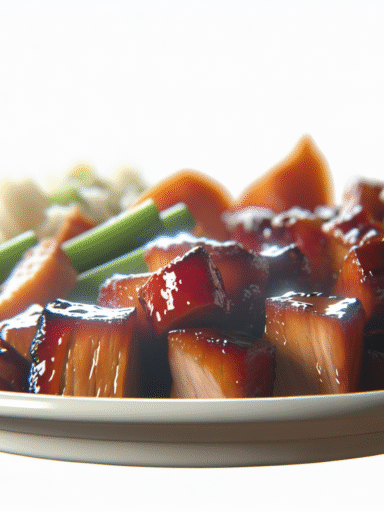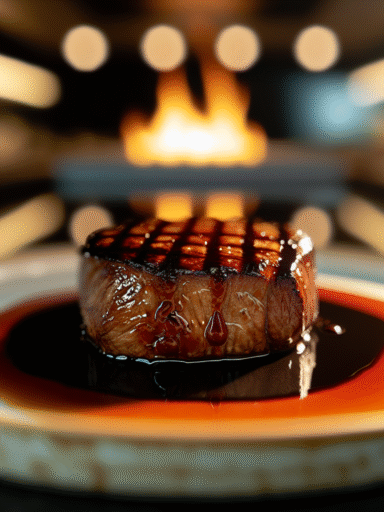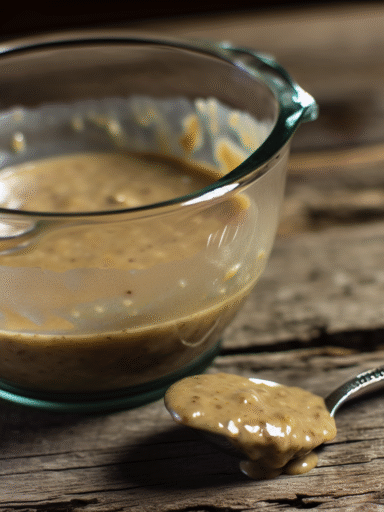The Holy Trinity: The Flavor Base of Louisiana Cuisine
If you’ve ever wondered what gives Cajun and Creole dishes their unmistakable, soul-satisfying flavor, the answer lies in the Holy Trinity. This humble mix of aromatic vegetables forms the foundation for countless recipes from gumbo to jambalaya, and knowing how to master it can truly elevate your cooking.
Tags / Categories
- Flavor Profile: Savory, aromatic, slightly sweet
- Main Ingredients: Onion, bell pepper, celery
- Region: Louisiana, Southern United States
- Usage: Flavor base for soups, stews, sauces, and rice dishes
Quick Info Box
- Prep Time: 10 minutes
- Cook Time: 5–7 minutes
- Total Time: 15 minutes
- Difficulty Level: Easy
- Yield: Base for 4–6 servings
Ingredients List
- 1 cup finely chopped yellow onion (about 1 medium onion)
- 1/2 cup finely chopped green bell pepper (about 1 small pepper)
- 1/2 cup finely chopped celery (about 2 stalks)
- Optional: 1–2 cloves garlic, minced (for extra flavor)
- 2 tablespoons vegetable oil or butter
- Salt and pepper, to taste
Instructions
- Prep your veggies: Rinse and finely chop your onion, bell pepper, and celery so they’re roughly the same size. This ensures even cooking and that perfect blend of flavors.
- Heat the oil: In a large skillet or saucepan, warm the vegetable oil or butter over medium heat until shimmering. Your kitchen will start smelling amazing right about now.
- Sauté the Holy Trinity: Toss in the onions first—cook for about 2 minutes until they start to soften and become translucent. Then add the bell peppers and celery. Stir occasionally, cooking for 3–5 minutes until everything is tender but not browned.
- Add garlic (optional): If you like a bit of garlic punch, toss it in now and cook for another 30 seconds until fragrant. Don’t stress if it’s a little chunky; it will soften further in your dish.
- Season: Sprinkle with salt and pepper to taste, stir well, and remove from heat. Your Holy Trinity is now ready to be the flavor backbone in your favorite Cajun or Creole recipe.
Serving Suggestions
The Holy Trinity is incredibly versatile. Use it as the first step in making gumbo, jambalaya, etouffee, or red beans and rice. It also adds great depth when sautéed with sausage, seafood, or chicken. Think of it as your trusty flavor foundation—once you master it, endless delicious dishes await.
Origin & History
The term “Holy Trinity” in Louisiana cooking draws inspiration from the traditional French mirepoix, which blends onions, carrots, and celery. But Cajun and Creole cooks swapped carrots for bell peppers, adapting the mix to local flavors and ingredients. This trio underpins much of Louisiana’s vibrant culinary heritage, connecting history and culture in every bite.
Fun fact: The Holy Trinity isn’t just cooking jargon—it’s a beloved symbol of Southern hospitality, flavor, and tradition passed down from generations.
Variations & Substitutions
- Heat it up: Add diced jalapeños or cayenne pepper for a spicy kick.
- Low FODMAP: Use green bell peppers and celery but omit onions or substitute with asafoetida powder sparingly.
- Regional twists: Some recipes incorporate tomatoes or add garlic upfront for a more robust flavor profile.
- Oil choices: Swap vegetable oil with bacon fat or duck fat for a smoky depth.
Storage & Make-Ahead Tips
You can prepare the Holy Trinity ahead of time and refrigerate it in an airtight container for up to 3 days. It reheats beautifully—just warm over medium heat before adding it to your recipe. Want to freeze it? No problem. Pack in freezer-safe containers or bags and use within 2 months. Just thaw overnight in the fridge for best results.
Nutritional Information
Per serving (about 1/6 of the prepared mix):
- Calories: 40
- Fat: 4g (mostly from oil)
- Carbohydrates: 3g
- Fiber: 1g
- Protein: 1g
- Sodium: Variable, depending on added salt
Related Sauces / Try Next
- Creole Sauce – A tomato-based sauce with similar aromatics.
- Roux – The essential thickening base for gumbo.
- Remoulade – A zesty Louisiana-inspired condiment.
FAQ
Q: Can I use other types of peppers instead of green bell pepper?
A: Absolutely! You can swap green bell peppers with poblano for mild heat or even red bell peppers for a sweeter flavor, but the traditional Holy Trinity sticks with green.
Q: What if I don’t have celery on hand?
A: Onion and bell pepper are essential for the authentic flavor, but if you’re short on celery, finely chopped fennel or even carrot can work in a pinch, though it’ll change the taste slightly.
Q: Is the Holy Trinity only for Cajun and Creole cooking?
A: While it’s rooted in Louisiana, this flavorful veggie combo can enhance many dishes, from stews to sauces, so don’t hesitate to use it in your everyday kitchen!
There you have it—the Holy Trinity decoded and ready to inspire your next savory creation. This simple mix may be humble, but its impact on flavor is mighty. Remember, every great Louisiana dish starts with these three friends—your kitchen’s flavor MVPs.



